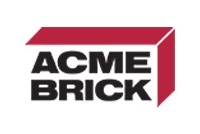Renovating the symbolic center of the University of Georgia


The University of Georgia’s (UGA) campus in Athens, Ga., is widely regarded as one of the most picturesque in the nation, with its tree-lined walkways; ample green space; and historic, diverse architecture. The best examples of this entire splendor can be seen in the area known as North Campus, which is the property where the university’s first buildings were constructed. The school, chartered in 1785, takes very good care of its grounds and infrastructure, always with an eye toward historic preservation and architectural significance. In fact, in 2006 the university celebrated the bicentennial of the opening of its first building, Old College, for which it had spent the previous two years renovating. This is the story of that renovation.
Old College, constructed as “Franklin Hall” between 1803 and 1806, has been the center of campus for more than 200 years, providing dormitory and boarding house space, classrooms, administrative offices, dining facilities, and even operating as a Naval Pre-Flight Training School during World War II. During its many years of service, this brick-clad, 21,000-square-foot facility has undergone several renovations. One renovation, around 1908, replaced many sections of the building’s brick exterior, which at the time was in a state of disrepair. Further, when the Navy took occupation in the 1940s it extensively reconfigured the interior, including removing the fireplaces, partitioning rooms and relocating staircases.
|
| ||
The building, named in honor of Benjamin Franklin, was modeled after Connecticut Hall at Yale University. It was Yale Professor Josiah Meigs who brought the plans for the building with him when he succeeded Abraham Baldwin as UGA president in 1801. As the first building constructed in Athens, and with no way of knowing in which direction the university would grow, officials decided to build the three-story structure with identical front and back sides. Unfortunately, virtually nothing remains of the original Franklin Hall, save for the granite foundation walls and a few hand-hewn timber roof trusses. “It’s sort of ironic,” Scott Messer, a campus preservation planner for the UGA Office of University Architects, once said. “We have an 1803 foundation and roof, a 1908 exterior and a 1940s interior. Our oldest building really isn’t.”
Messer also was the project manager for the Old College renovation, for which planning began in 2004 followed by construction in 2005. To be more accurate, he says, this project was a rehabilitation to modernize Old College with central heat and air, and to bring it into compliance with the Americans with Disabilities Act (ADA) by adding an elevator and access ramp. Additionally, portions of the building’s interior were to be updated and a state-of-the-art classroom space was to be added, because the university decided that at least one classroom should be provided in each administrative building on campus. “Historic North Campus tends to have a very administrative flavor. We always try to put a classroom back into these renovations, so we’re making sure we have students circulating [on North Campus],” Messer said.

For the $2.3-million project, UGA hired architecture firm Lord, Aeck & Sargent (LAS), which has a Historic Preservation Studio and has worked with the university on other projects. The general contractor was Malone Construction Co., and playing a crucial role was Nawkaw Corp., whose matching/staining technologies were employed with great effect. The exterior brick masonry walls, limestone lintels, sills and belt courses were surveyed and areas of deterioration addressed.
To update the building’s HVAC system, the older, window-mounted AC units had to be removed. This meant replacing large sections of the brick exterior and then staining it to match the older materials. “One of the biggest portions of this job was mechanical updates. … We pulled all these wall units out, and that’s really what caused a lot of the masonry repair that was required on the building,” said Rob Wanderman, an associate architect at LAS and a project manager for the Old College rehab.

In their search for the perfect replacement brick, the team ended up choosing an oversized brick paver rather than a typical wall unit. “That was the closest thing they could find in size [to the original brick],” said Nawkaw’s Nathaniel Jones, who helped in the brick selection process prior to his team staining the material to match the existing brick.
“As we got into the process,” Messer said of the brick replacement, “we started looking for recycled materials and had a difficult time identifying a supplier of a suitable salvage brick. So we found a new brick with a wire cut on it. It didn’t necessarily have the same color and certainly didn’t have the same randomness of color.”

In the end, Nawkaw wound up making several different colors for the job using its proprietary Emulsion Color Treatment, NECT-90. “It was a pretty random pattern – if you will – that was there originally. … We had to make several colors to get that job to blend properly,” Jones said.
And in another nod to historical accuracy, LAS conducted a thorough mortar analysis to match as closely as possible to the existing mortar in color, texture and physical properties. What they found was an additive not common in today’s mixes – iron shavings. “We actually mixed into the [new] mortar almost the same iron shavings,” said Wanderman. “When we first put it up, it didn’t show up quite as much, but over time it has started to show itself. The mortar has blended very well.”
|
 | |
 |

Of course, replacing sections of brick here and there wasn’t the extent of the job undertaken by LAS and the construction team. They removed the building’s chimneys (which were not the original flues and were not in operation anyway since the Navy took out the fireplaces) because they were weighing heavy on the original timber roof trusses. However, because the chimneys had long since become a crucial part of the aesthetic appeal of Old College, LAS designed lightweight chimneys in a brick more historically attune to the first, original chimneys placed on the building in 1806. “It was important to keep them on the building because [Old College] has such a presence on the [campus]. … The building would look ‘naked’ without the chimneys,” said Wanderman.
And in making the building ADA compliant, a ramp-accessible lobby was constructed in the basement of Old College with access to the rest of the building. This way, Wanderman said, the new addition doesn’t detract from the original appearance of the building. The elevator was placed on the building’s south side, between the existing outside stairs.

Even though the building is listed on the National Register of Historic Places, the team had no difficulties in incorporating these upgrades because, as Wanderman said, they handled the project sensitively, minimizing alterations and carefully blending new additions to be respectful with the original characteristics of the building. The result, he said, is a building that looks even better today, because the team removed a great deal of the ‘40s- and ‘50s-era applications and those in-wall AC units.
|
| |
|
|
When the Old College rehabilitation project was completed in August of 2006, the university celebrated the re-opening of its most significant building by designating it as the new home of the school’s Franklin College of Arts & Sciences (est. in 1801), bringing the venerable structure back to its historic seat. “It’s a very important building, not just to the university but to Athens as well,” said Messer. “I think everyone is pleased with it.” MD














